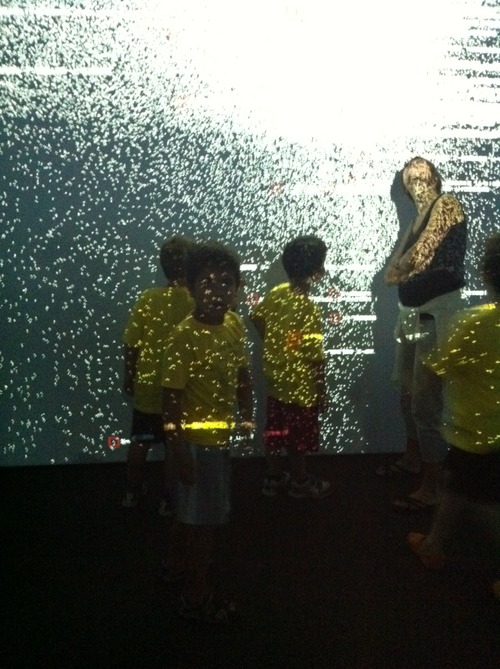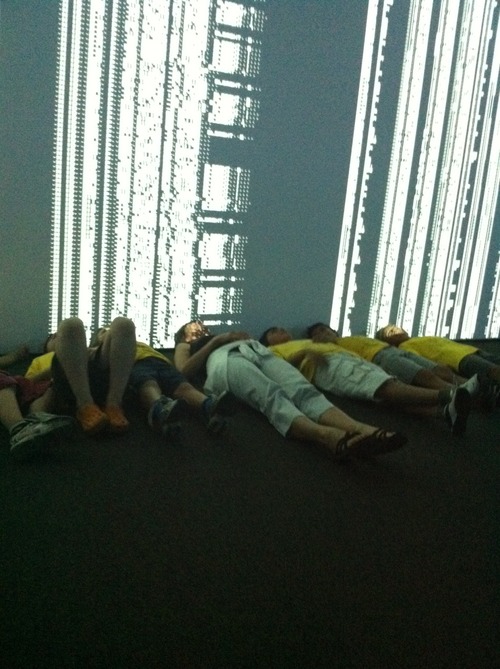You Can Even Lie Down on the Floor if You Want to: Exploring Installation with Elementary School Kids
You Can Even Lie Down on the Floor if You Want to: Exploring Installation with Elementary School Kids
Instead of making art that people could only look at, artists began to make art that people could walk right into.

This is one simple way we might explain installation to a group of young children. Installation makes sense to them. Thinking about art beyond traditional painting and sculpture is no stretch for many children. Some who have grown up creating images with electronic devices since before they could hold a pencil and have interacted with images in their daily life, and are accustomed to the myriad of forms a given narrative can take. That said, each time we walked into Ryoji Ikeda’s data.tron (advanced version 2) this summer, our young visitors showed no shortage of astonishment, wonder, excitement, and curiosity. Immersive works, using new technologies or old, have such potential to impress visitors of any age beyond their expectations.
Exploring the work through the body and its multiple senses required little if no instruction or explanation — no unlearning of traditional gallery etiquette. One of our roles, then as educators, is to not only facilitate this type of exploration, but to facilitate an awareness of it, to guide young visitors in being mindful and conscious of how they interact with an artwork once they have engaged and responded to it, uninterrupted, in their own unique ways. This may or may not involve dialogue, but it necessarily involves our own bodies to demonstrate new possibilities for a somatic experience with visual art.

Soma: the body in its wholeness — turning our heads, crouching, sitting down, raising our hands to watch the projected data move over our skin, or simply pointing. Through our movements and gestures - made from within the group, beside and between participants – educators can provide new perspectives and demonstrate our own curiosity and active engagement with the artwork. In doing so, we hope young children will better understand not only with their minds, but also with their bodies, what an installation is.
Emily Keenlyside
DHC/ART Education
Photos: Emily Keenlyside